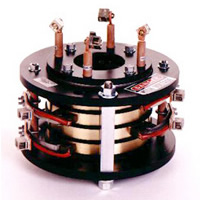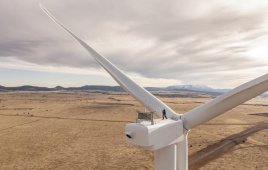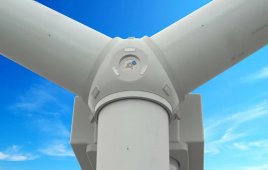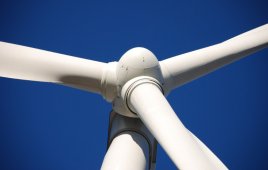What tests should a slip ring pass to consider it reliable?
The most critical time to perform reliability tests on slip-ring assemblies is before they leave the factory. This is especially true when it is not feasible to perform a complete testing procedure on a product once installed up-tower. Analysis should consist of at least three tests: isolation, continuity, and high-voltage potential test for power circuits.
A slip ring’s primary function is to pass electrical signals and power from a stationary point to a rotating point. So naturally a continuity test is needed to check and ensure that the lines entering are meeting up with the lines leading out. Perhaps more importantly is to know if any individual circuits are making contact unintentionally via an isolation test. The final minimal requirement is a high-voltage potential test which applies a potential voltage of usually two times the rated voltage, in addition to 1000 V and another 20% between the circuit under and around all surrounding circuits along with a ground source. Applying a potential difference of this level for even a little bit of time ensures that the product can handle the rated voltage for the life of the product.
Additional tests that measure the level of performance on a slip ring include electrical resistance, electrical noise and bit-error rate testing of any protocols passing through the slip ring. Electrical-resistance testing, usually performed using a 4-wire Kelvin technique, will accurately measure in milliohms the resistance from the individual lines in to the lines out. Electrical-noise testing goes one step further by collecting a series of resistance values and calculating the deviation from the normal level. Noise testing is typically done while the product is in rotation. Lastly, bit-error rate testing involves sending packets of information using the preferred protocol from one end of the slip ring to the other to ensure the contact materials can handle the required data speeds. Unfortunately, these testing methods require equipment that weighs an additional 100-lb carried up-tower, so the tests are usually performed down-tower and in a lab.
The suggested intervals for performing slip-ring maintenance, cleaning out dust or wear debris, is once or twice a year. Slip rings require two materials to rub against each other, meaning that no matter how well lubricated the contacts are there will be wear debris similar to the dust produced by rubbing sand paper on wood. While the cover is open it is also good to check the slip-ring contacts to ensure they are following the intended rotational paths.
Outside of the main slip ring contact an assembly will have a few stationary connections. Check that these haven’t loosened due to the vibrations of the tower during operation. Also check any wiring paths for kinks or pinches, because these will derate the insulation. Depending on the slip-ring design, checking the product for adequate spring pressure is another possible step to take. Proper spring pressure will help reduce power loss and increase product life. Slip-ring failures, though unlikely, are noticeable. They can also be costly and require downtown until a replacement assembly can be installed. Fortunately with a proper design, through reliability testing and routine maintenance, modern slip-ring designs can last for over 200 million revolutions.
By: Kyle Riegel, Design Engineer, United Equipment Accessories
Filed Under: Featured, Turbines






Wind turbine slip ring is necessary for wind energy, this slip ring can transfer power and signal, also can add control system, but the maintenance cost is very high, so development a high performance slip ring is essential.
More information: http://www.arslipring.com